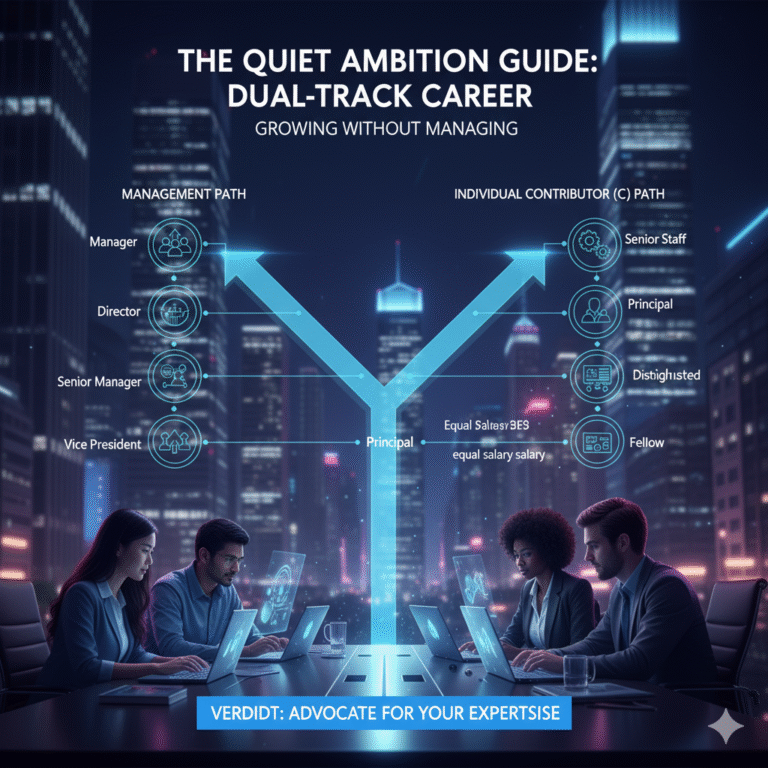Strategic Networking: How to Build Valuable Connections (Without Seeming Pushy or Forced)
For many professionals, the word “networking” conjures images of awkward conversations, forced smiles, and a desperate exchange of business cards. It often feels transactional, pushy, and deeply inauthentic. This perception is precisely why so many people fail at it, avoiding it until they desperately need something—a job, a client, or a favor.
But this common view fundamentally misunderstands the goal. Strategic Networking is not about “what can I get?” but about “what can I give?” It’s the art and science of building genuine, long-term professional relationships based on mutual value and trust. It’s about planting seeds long before you need the shade.
This guide breaks down how to build valuable connections effectively and authentically. We will explore a framework that shifts the focus from transactional encounters to building a sustainable ecosystem of professional allies, ensuring you never have to feel pushy or forced again.
The Foundational Mindset Shift: From Transactional to Relational
The core problem with traditional networking is its short-term, transactional mindset. People attend an event, collect cards, and send follow-up emails only when they need something. This approach is transparently selfish and rarely yields strong, lasting connections.
Strategic Networking, in contrast, is a relational long game. It operates on the principle of reciprocity, but with a crucial delay. You focus first on providing value without any expectation of an immediate return. This builds a “relationship bank account” filled with goodwill. When the time comes that you genuinely need help, your request is not seen as an imposition but as a natural withdrawal from an account you’ve diligently funded.
The “Give First” Principle
The fastest way to build valuable connections is to stop trying to be interesting and start being interested. Focus your initial interactions entirely on the other person. Ask thoughtful questions about their challenges, their goals, and their industry. Listen intently. The single most valuable (and rare) thing you can offer anyone is your undivided attention.
From that foundation, identify small, low-friction ways to provide value. This could be:
- Sending an article you genuinely think they would find useful.
- Making a relevant introduction to someone else in your network.
- Sharing a tool or resource that solved a problem they mentioned.
- Offering a sincere compliment on a recent project or accomplishment.
This approach transforms you from a “networker” (a taker) into a “connector” (a giver).
A Framework for Authentic ‘Strategic Networking’
Building a powerful network doesn’t happen by accident. It requires an intentional, strategic approach. Here is a step-by-step framework to build and nurture connections authentically.
Step 1: Define Your Goals and Identify Your Gaps
You cannot network strategically if you don’t know why you’re doing it. What are your five-year career goals? What knowledge or access are you missing? Your network should be a reflection of your aspirations.
Instead of randomly collecting contacts, identify the *types* of people you need to connect with. This might include:
- Peers in your industry for knowledge sharing.
- Mentors who have achieved what you want to achieve.
- Experts in adjacent fields (e.g., a marketer connecting with a data scientist).
- Potential clients or partners.
This clarity allows you to focus your limited time and energy on building professional relationships that are mutually beneficial.
Step 2: The Warm Introduction (The Gold Standard)
A cold email has a low success rate. A warm introduction from a mutual contact is the gold standard of Strategic Networking. It instantly transfers a layer of trust from your mutual connection to you.
How do you get one? Never just ask, “Can you introduce me to [Person]?” This creates work for the connector. Instead, make it impossibly easy for them. Send an email like:
“Hi [Connector], I see you’re connected to [Target Person]. I’ve been following their work on [Specific Project] and really admire their approach. My goal is [Brief, Clear Goal]. Would you be comfortable forwarding the short message below to them? I’ve included a ‘no-pressure’ opt-out for them.”
This respects the connector’s time and their relationship with the target person.
Step 3: The “Intelligent Cold Outreach” (When You Must)
If you have no mutual connection, you must do “intelligent cold outreach.” This is not spam. It is a highly personalized, respectful, and value-driven message. It must demonstrate that you have done your homework.
A bad cold email: “Hi, I’m a young professional and would love to ‘pick your brain’ for 15 minutes.”
An intelligent cold email:
“Subject: Quick Thought on Your Recent [Podcast/Article]
Hi [Name], I just read your article on [Topic]. Your point about [Specific Insight] was brilliant. It reminded me of this [Related Report/Tool] that you might find interesting. That’s all, just wanted to say thank you for your work.”
Notice there is no “ask.” You are simply starting the relationship by giving. If they reply, a conversation may begin. The goal of the first contact is simply to get a positive reply, not to secure a meeting. Strategic Networking is about patience.
Nurturing the Connection: How to Follow Up Without Being Annoying
Meeting someone is not networking. It’s an introduction. The *real* work of Strategic Networking happens in the follow-up and long-term nurture. This is where 90% of people fail.
The Immediate, Memorable Follow-Up
Within 24 hours of meeting someone (in person or virtually), send a follow-up. Do not use a generic template. Your message must be specific.
“Hi [Name], it was great meeting you at [Event/Call] today. I really enjoyed our conversation about [Specific Topic We Discussed]. As promised, here is the link to [Resource I Mentioned]. Hope it’s helpful. All the best, [Your Name].”
This message is simple, valuable, and reinforces that you are a listener and a person who follows through.
The Long-Term Nurture System
You won’t build valuable connections with a single email. You need a system to stay “top of mind” in a genuine way. Create a simple spreadsheet or use a personal CRM to track your key contacts.
Set reminders to reach out every 3-6 months. Your “touch points” should not be “just checking in.” They must provide value. Examples:
- Congratulate them: “Saw on LinkedIn you got promoted! Huge congrats.”
- Share relevant news: “This article on [Industry Trend] made me think of our conversation.”
- Offer a small introduction: “I just met [Person] and thought you two might enjoy connecting.”
This is the work that turns a contact into an ally. It takes 30 minutes a week but yields compound interest over a career.
The Fear of “Being Pushy”: How to Ask for What You Want
Eventually, you will need to make a “withdrawal” from your relationship bank account. If you have spent months or years making deposits (providing value), this is not pushy; it’s a natural progression of the relationship.
How to Make the “Ask”
When you need to ask for something—advice, an introduction, a review of your resume—be direct, respectful, and make it easy to say no.
- Acknowledge the Relationship: “I’ve really valued our chats over the past year.”
- State Your Need Clearly: “I’m currently exploring new roles in [Industry] and was hoping for your 15-minute perspective on a few companies.”
- Define a Specific, Small Action: Don’t ask to “pick your brain.” Ask for “15 minutes to discuss three specific questions.”
- Give an Easy “Out”: “I know you’re incredibly busy, so please feel zero pressure if the timing isn’t right.”
This approach respects their time and autonomy, making them *more* likely to help. True professional relationships are strong enough to handle a direct request.
Conclusion: Networking Is Just Relationship-Building with a Purpose
Stop thinking of it as “networking” and start thinking of it as “professional relationship building.” The most successful people are not the most aggressive networkers; they are the most generous connectors. They build strong, diverse networks of people who trust them, respect them, and are happy to help them—because they have a long history of helping others first.
Strategic Networking is a core career skill. It’s a long-term asset that, when built authentically, pays dividends for decades. Be patient, be curious, and always, always find a way to be helpful. The connections will follow.







